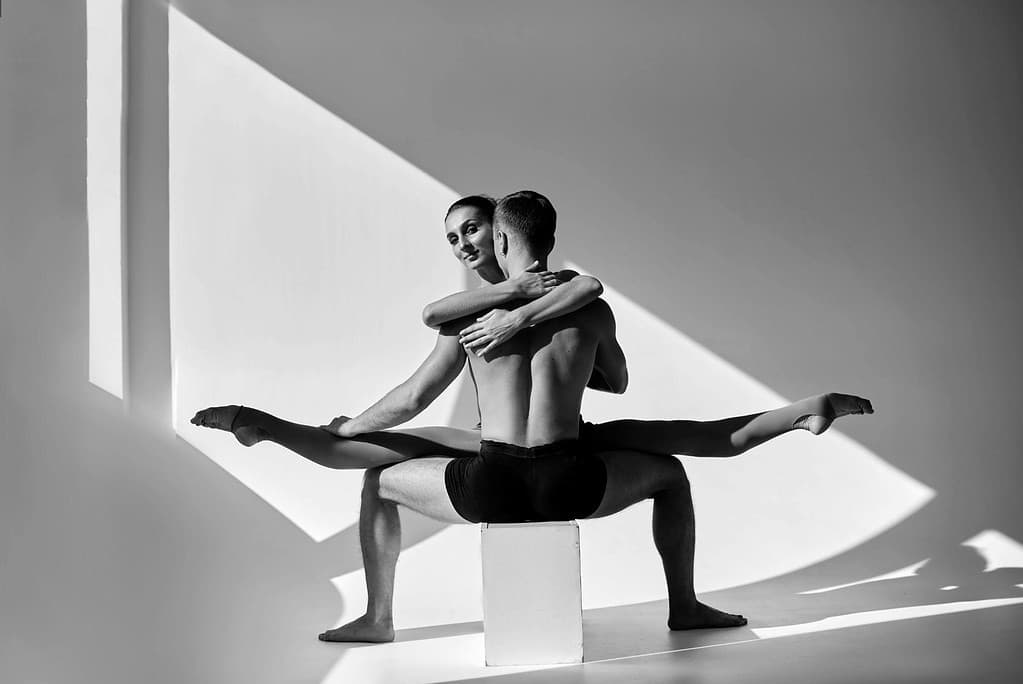5 Easy Ways to Improve Your Ballet Splits in 2025
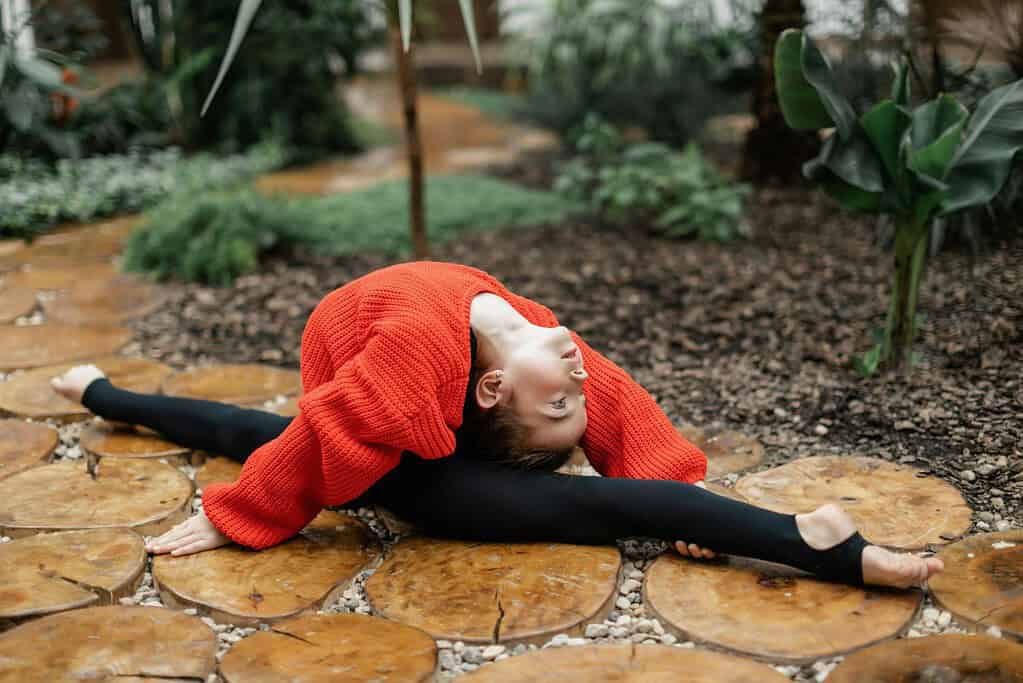
Whenever I told people I was a dancer, the first question was ‘can you do the splits?’ I answered yes, but I always felt that ballet splits were just a tiny piece of a much larger story.
Now, though, I see their value.
While extreme flexibility isn’t essential for a dance career, working on skills like the splits does help improve flexibility, and range of motion to create more beautiful and aesthetic lines.
In this blog post, I’ll show you five easy ways to improve your ballet splits.
WHAT ARE BALLET SPLITS?
In ballet, ‘splits’ refer to a position where a dancer extends one leg forward and the other back, with both legs fully stretched along the floor.
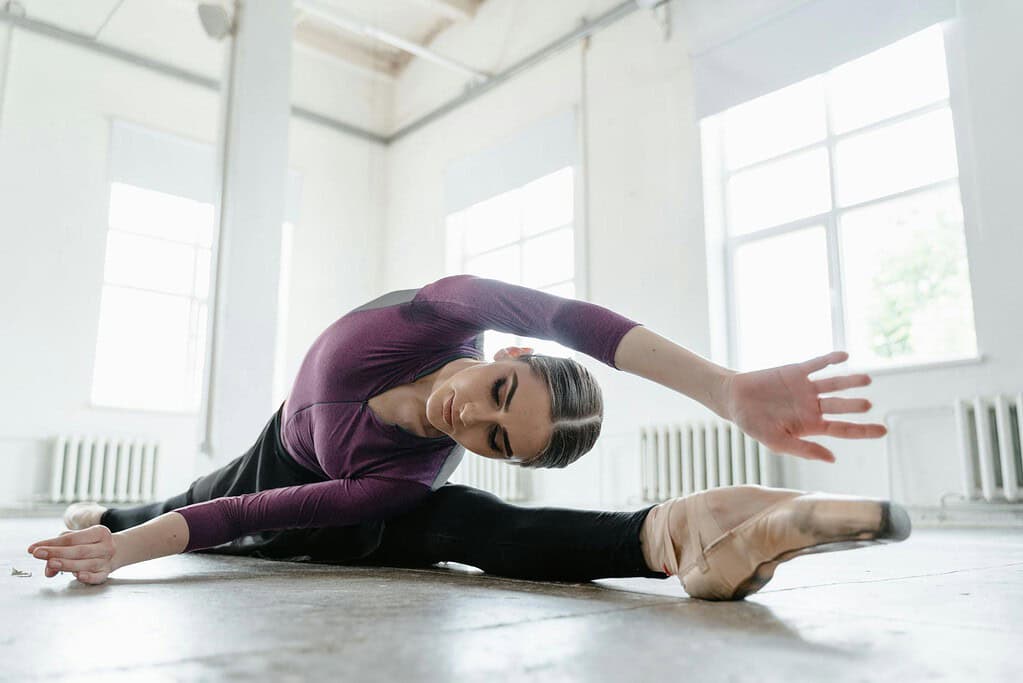
Splits can be performed in two main ways:
In both cases, dancers aim for squared-off hips so both hips face forward.
WHY ARE BALLET SPLITS IMPORTANT?
While not an official movement in ballet, splits are incredibly beneficial for dancers because they help increase flexibility and range of motion.
Being able to lift my legs high in adagio and achieve beautiful, extended lines in grand jetes gave me more confidence as a dancer.
This progress was largely thanks to developing my ability to do ballet splits comfortably in all directions, in addition to mastering oversplits.
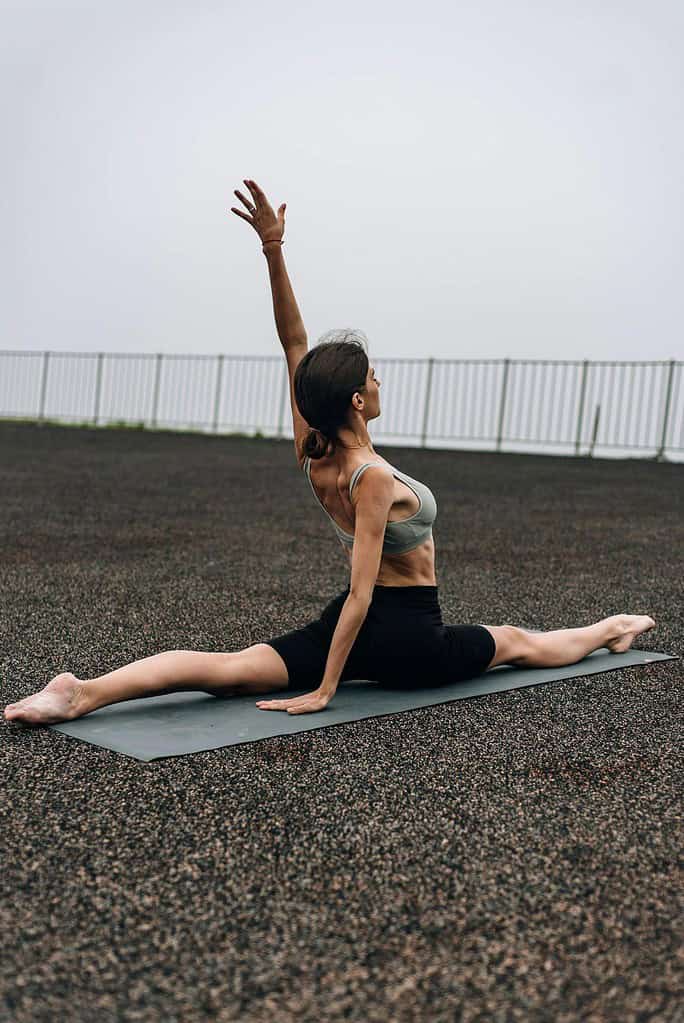
TOP 5 WAYS TO IMPROVE YOUR BALLET SPLITS
The top 5 ways to improve your ballet splits include:
#1 PROPER WARM UP
Before starting any stretching routine, it’s essential to ensure that your muscles are properly warmed up.
A good warm up:
RECOMMENDATION
Begin with a light warm up to increase blood flow and gently elevate your heart rate. Jogging in place or light cardio is perfect for this.
Aim to get a light sweat going, which is a good sign your muscles are warming up.
Once you’re feeling loose, add some dynamic stretches like leg swings or lunges to gradually boost your range of motion.
To finish your warm up, actively stretch in the split positions to prepare your muscles for deeper flexibility.
#2 HAMSTRING FLEXIBILITY
To achieve flatter splits (or even progress to oversplits), it’s essential to work specifically on hamstring flexibility.
Tight hamstrings can limit your range of motion and make it challenging to extend fully through your legs (aka straightening your legs can become quite the mission).
Plus, tightness in your hamstrings can be a very uncomfortable feeling and even lead to strain over time.
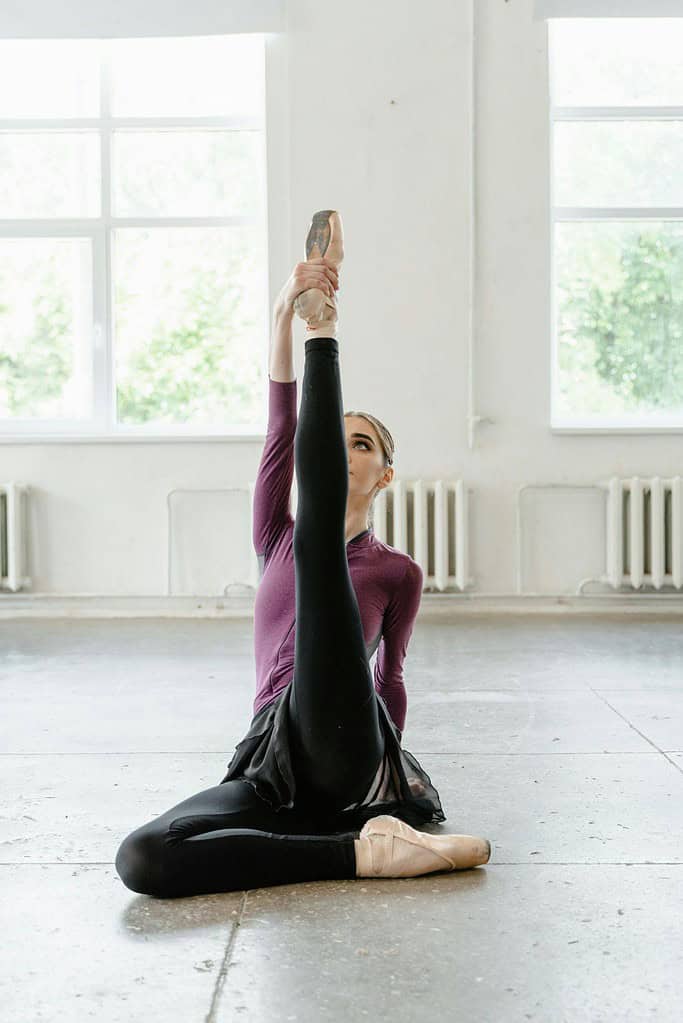
RECOMMENDATION
Incorporate targeted hamstring stretches into your routine to improve both your splits and also help you achieve smoother, more effortless leg extensions.
This is really useful for your adagio work!
I recommend trying:
These will help you lengthen the muscles and reduce the tightness or pinching that can sometimes be felt behind the knee.
Dynamic movements are also essential for increasing flexibility, so consider adding lying-down grand battements, which use gravity to deepen your stretch and increase your range.
Try a combination of both static and dynamic stretching for the best results.
#3 HIP FLEXOR FLEXIBILITY
Just like tight hamstrings, tight hip flexors can limit your ability to achieve a deep split, especially for the back leg in front splits.
Stretching your hip flexors allows your hips to settle more comfortably and naturally into the split position without strain.
By loosening these muscles, you’ll find that your hips can get closer to the ground with less effort, helping you achieve a flatter and more relaxed split.
RECOMMENDATION
Incorporate hip flexor stretches, like lunges, the kneeling hip flexor stretch, and pigeon pose, to improve your alignment and release hip tension.
I’d also recommend using a foam roller or massage ball to massage tight hip flexors.
#4 STRETCHING OUT YOUR GROIN
For middle splits, flexibility in the groin and inner thigh muscles is essential, as these muscles allow you to open your hips and legs fully to reach a flat 180-degree line.
If you find it challenging to widen your legs in this position, limited flexibility in your groin and inner thighs may be the cause.
RECOMMENDATION
I’d recommend incorporating the following stretches:
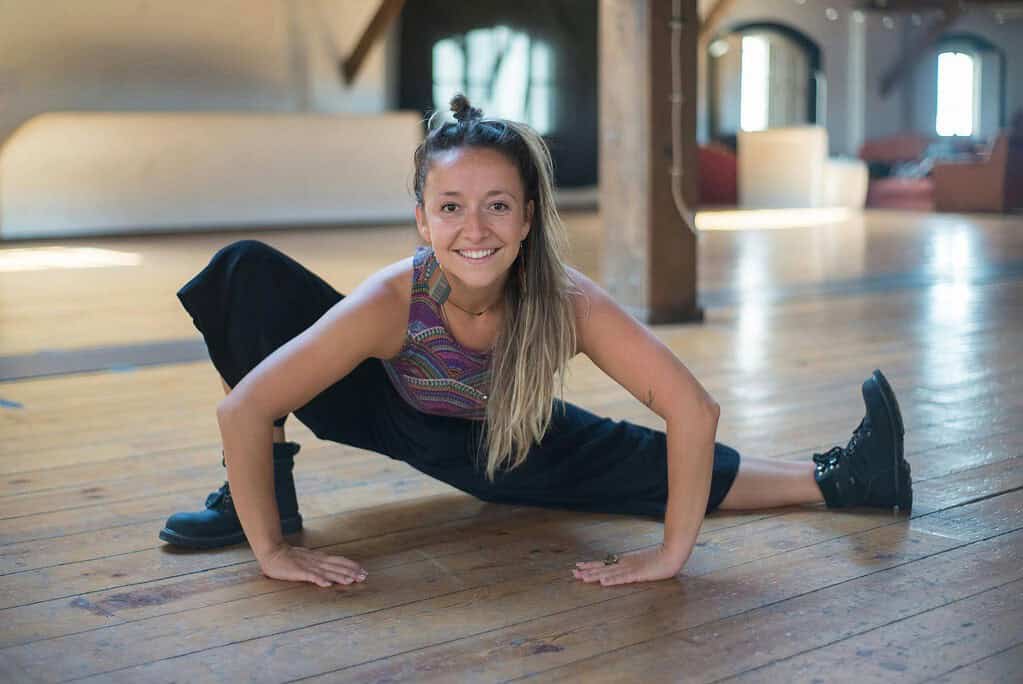
These exercises help increase flexibility in the inner thighs and hips, which is key to achieving a wider, deeper middle split.
Don’t be disheartened if you don’t see immediate results. Achieving a middle split can be particularly challenging for many dancers.
Keep in mind that our individual bone structure and hip anatomy can sometimes naturally limit how wide we can go, despite our best stretching efforts.
#5 USING PROPS
Once you feel comfortable in your splits and no longer feel a stretch, it’s time to incorporate props into your stretching routine.
Props are a great way to deepen your stretch and work towards oversplits.
RECOMMENDATION
Using props like yoga blocks, pillows, or a step can be a great way to gradually ease into deeper splits.
This is because the props elevate your feet and allow your hips to sink further into the ground.
You can place a prop under your front or back leg (or even both) to help you achieve a deeper split position and work on increasing your flexibility.
It’s important to progress gradually and avoid overstretching. Hold the position for around one minute on each side, rather than staying in the stretch for too long.
TIPS TO PROGRESS FROM FLAT SPLITS TO OVER SPLITS
Here are some tips to help you work smartly and safely towards achieving the perfect oversplit position:
TIP 1 – BUILD UP GRADUALLY
It’s important to gradually work up to oversplits, especially if your body isn’t ready for the over-extended position.
Start by deepening your existing splits, gradually sinking lower as your muscles loosen.
Once this feels comfortable, you can begin using a prop, like a yoga block, under your front heel or back thigh to gently lift the position.
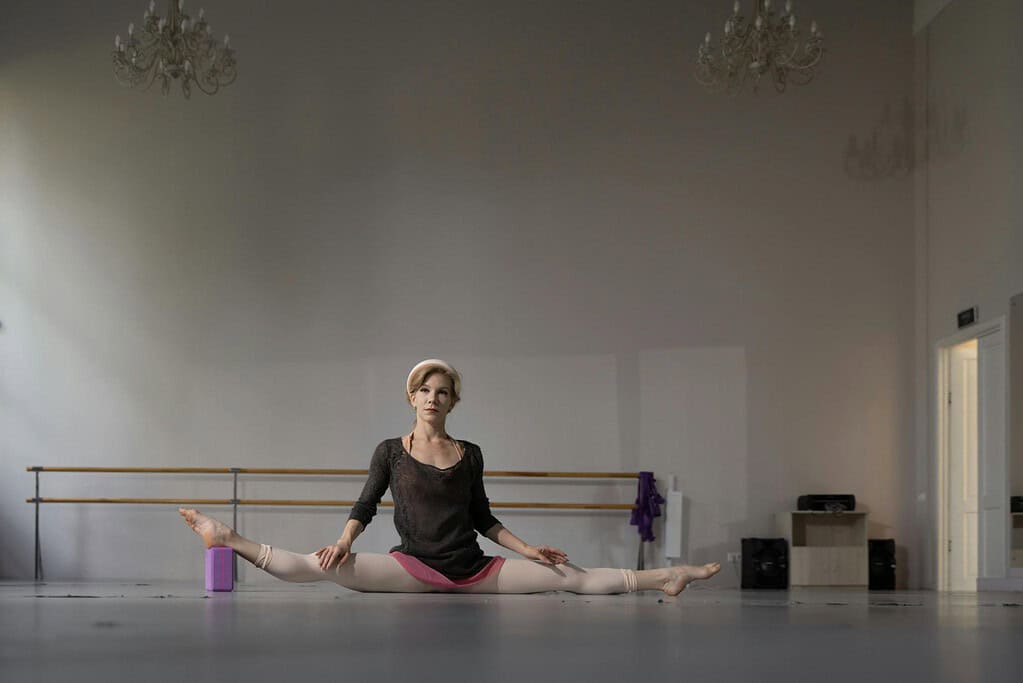
Slowly increase the height as your flexibility improves so that you can continue to feel a slight stretch in your hamstrings and hips.
Always listen to your body and allow time for your muscles to adapt safely to avoid strain or injury.
TIP 2 – DON’T NEGLECT THE BACK LEG
While the front leg often gets the most attention, the back leg is just as crucial for achieving a balanced and properly aligned hyper-extended split.
Using a prop under both the front and back legs can help support and deepen the stretch, whether you use it for one leg at a time or both together.
Focusing on stretching the hip flexor of the back leg and the hamstring of the front leg will improve both flexibility and alignment, resulting in a deeper, more stable hyper-extension.
This is particularly important in moves like a grand jete, where you want a slight lift in both legs for a symmetrical position.
TIP 3 – CONSISTENCY
Achieving hyper-extended splits takes regular practice, so don’t expect it to happen instantly or feel comfortable right away.
Consistent stretching routines are key to gradually improving flexibility and range of motion, while also reducing the risk of injury.
Remember to give your muscle fibres time to repair and recover in between sessions.
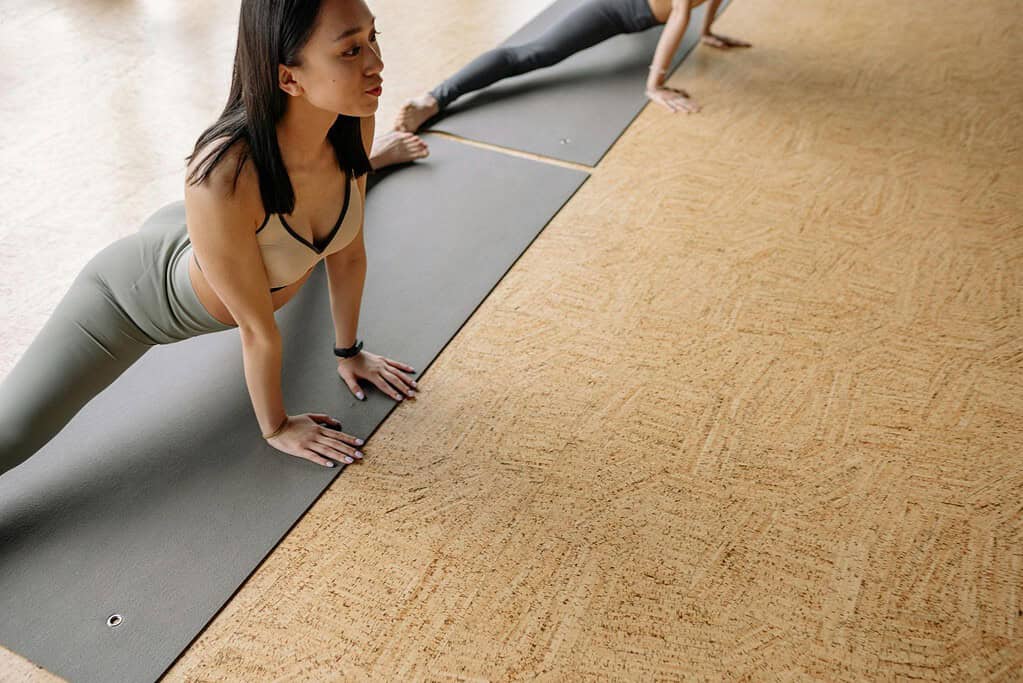
WRAP UP
One of the best ways to increase your flexibility is by working on your ballet splits.
There’s no harm in focusing on this position, and trust me, you’ll notice a big difference in your overall dancing and movement quality.
With a consistent routine, you’ll see improvements in your lines.
Happy stretching!
